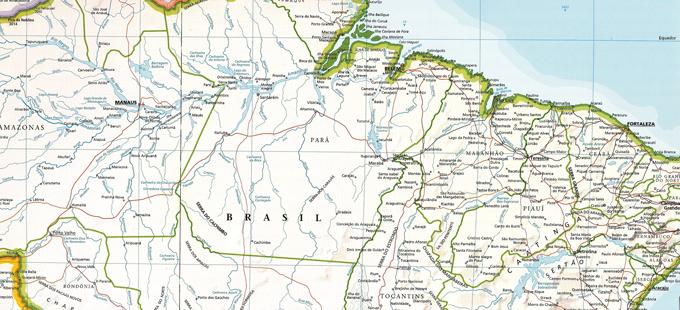By Justin Chandler
Ryerson students are working with business BlueDot to map the spread of infectious diseases such as Zika virus disease.
Anne Christian, a master’s student in the Ryerson spatial analysis program visualizes data for BlueDot. She said she reads news stories about the Zika virus when she commutes, so it’s “really cool” when she goes into work and thinks, “I’m making a map or I’m doing analysis that’s playing a part in solving this epidemic.”
BlueDot works with other organizations, such as the Centre for Disease Control and Prevention (CDC) in America and the Canadian Foreign Affairs department to research the spread of infectious diseases. BlueDot uses publicly available data such as recorded weather and satellite images that show industrialization as well as private data collected by organizations it partners with to do its analyses, said BlueDot chief operating officer Albert Tseng.
Tseng said BlueDot is constantly monitoring the spread diseases worldwide. In May 2015, BlueDot learned Zika was in Brazil and began to study how it could spread.
Sonya Karamchandani, a fourth-year Ryerson geographic analysis student who works with BlueDot as part of her program’s practicum, prepares data sets for an analysis and sometimes she helps analyzes them. She worked on BlueDot research published in The Lancet, a medical journal, in January. The research maps areas in North America and South America which are at seasonal or year-round risk for Zika virus.
Zika virus is a mosquito-borne virus first identified in humans in 1952, according the World Health Organization (WHO). It is spread to humans by mosquitoes of the Aedes genus type, and can be sexually transmitted between humans.
Most people infected with Zika virus have no symptoms. According to the WHO, people who do experience symptoms usually do so mildly in the form of a fever, rashes, muscle and joint pain, and headache. Such symptoms normally last a week or less.
But in Brazil, which will host the Olympics this summer, Zika has been tentatively linked to microcephaly, a birth defect associated with underdeveloped brains in newborns.
To determine which areas in the Americas are most at risk for Zika virus, BlueDot researchers studied worldwide travel data. By determining which busy airports are located in climates that support Aedes mosquitos, BlueDot was able to determine where mosquito populations could carry the virus. According to BlueDot, most of South America and Central America are at risk for Zika virus seasonally or year-round. Most of the eastern United States is seasonally at risk. BlueDot recommended that people in areas at-risk for Zika take precautions to avoid mosquito bites.
Ryerson professor Tim Sly, who is an expert in epidemiology, said it is important to consider a variety of factors when trying to determine why a disease is more prevalent in one population compared to another.
“At the moment, [Zika research] is a wide open fishing expedition,” Sly said. He compares learning about the virus to starting a jigsaw puzzle.
“You have three bits of a thousand present and you need to find the other parts, so everybody can contribute little bits,” Sly said.
He said the kind of disease mapping BlueDot does can be a “hypothesis-generating exercise” in which different factors can be linked to diseases. Important factors are time, place and the characteristics of people, which Sly calls the “three legs on the stool of epidemiology.”
He said sometimes seemingly innocent links can prove to be crucial in determining the cause of diseases and genetic deformities.
Tseng said it will be increasingly important to understand ecological variables that allow the Aedes mosquito to survive. He said income level may also be a factor in the likelihood of a person to contract Zika. Wealthier people may be less likely to be bitten by mosquitos because they tend to live in climate-controlled buildings and have access to barriers such as screened-in patios.
Christian, Karamchandani and Carmen Huber, a fourth-year geographic analysis at Ryerson who also works at BlueDot, recently mapped areas in south Asia where people are most at risk from Zika virus, Christian said. They overlayed variables such as population density and the percentage of women of childbearing age in an area to show where risk of contracting Zika and potentially microcephaly is greatest.
“It’s amazing that sitting at a desk from nine to five can really affect global policy,” said Karamchandani.
Huber said she likes working somewhere that’s more focused on doing good than on making money.
Karamchandani said she’s learned a lot working for BlueDot, which she said brings together people from diverse academic backgrounds, such as web design and disease modelling.
“When you bring that together, the environment really facilitates for a lot of growing and a lot of learning,” Karamchandani said.
Tseng said the company constantly has six to 10 positions available for students. Some students are paid and some, such as students working as part of a practicum, are not.











Leave a Reply